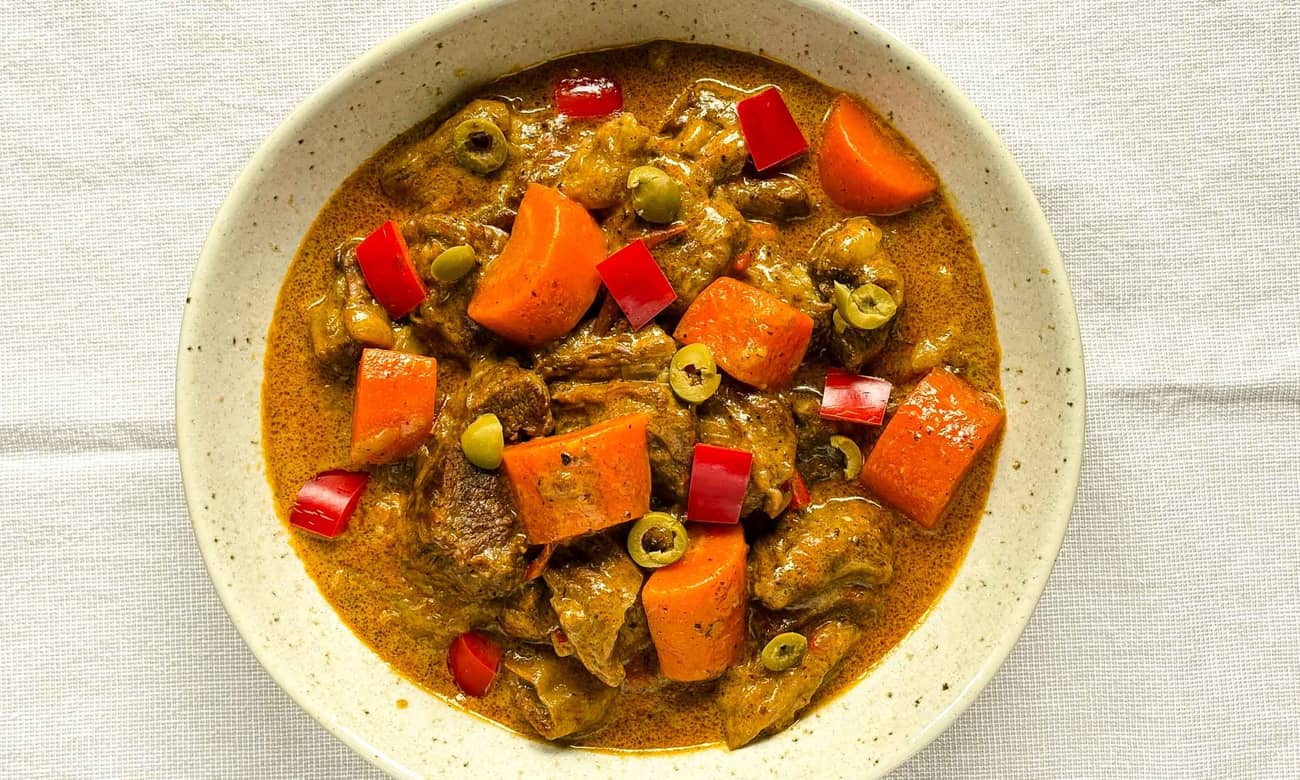
Laing hails from Bicol, a region well-known for its coconut-chili dishes. Laing features sturdy dahon ng gabi, AKA taro leaves, cooked in a creamy coconut broth, seasoned with ginger, bagoong, and chilies for aroma and heat.
When you’re learning to cook laing, your lola will tell you the one and only rule of this dish: Never stir the taro leaves into the coconut milk, or else the laing will make your mouth itch.
This no-stirring advice persists across generations of home cooks, who continue to obey and pass it on as laing law. No stirring, no itching. End of story. And for the most part, it works.
But for us, without wise lolas or Bicolano guidance or any sense of following instructions, we're left to wonder: Does stirring the leaves really result in itchy laing? What about the stirring causes the itching?
It’s true that laing, when not prepared correctly, can cause itchiness in your mouth and throat when consumed.
Despite what you've been told, the itchiness doesn't come from stirring. The itchiness comes from the taro leaves, which contain high amounts of calcium oxalate. Other plants have calcium oxalate too, but taro has so much of it that it’s unsafe to consume raw.
Laing combines taro leaves, coconut milk, and chilies in a hot and creamy vegetable dish. And despite what you've heard, learn why it's okay to stir it.


Calcium oxalates appear on the surface of taro leaves as needle-like crystals. They create irritation on contact, causing that itchiness your lola warned you about. Burning and swelling, too, in worse cases.
Before consuming taro leaves, you need to get rid of those oxalate crystals. Some cooks recommend soaking and rinsing the leaves in water. Many scientific sources advise a more effective method: boiling the taro leaves.
High heat in cooking breaks down taro leaves’ oxalate crystals. This doesn’t completely remove the calcium oxalate, but brings it to edible and irritant-free levels. The suggested cooking times vary between 40 minutes to an hour, changing the water halfway through.
Most advice you’ll read on preparing taro leaves assumes you’re working with the fresh stuff. What about the dried, packaged laing sold in groceries and markets?
According to Amy Besa in her cookbook Memories of Philippine Kitchens, experienced Bicolano cooks prefer dried laing for two reasons:
Plus, they store better and have a longer shelf life, meaning easier laing-making. For convenience, this recipe uses dried leaves.
Now we know where itchy laing comes from, whether or not you stir your dried leaves is up to you. Either way, you'll end up with hot, creamy laing at the table that's begging for an extra cup of rice.
Cook pork belly: Heat about 1–2 tbsp neutral oil in a large pan over medium heat. Add pork belly and sear, turning as necessary, until golden brown on all sides.
An alternative no-oil method is to add pork belly to the pan with a shallow layer of water. Bring to a simmer to soften the pork while rendering out the fat. Once all of the water evaporates, fry the pork belly in the rendered fat until golden brown all over.
Add aromatics: Add garlic, ginger, onions, and bagoong to the pan. Stir to combine and sauté until fragrant, about 5 minutes.
Add coconut milk and laing: Pour coconut milk into the pan and bring to a boil. Once boiling, reduce heat to medium-low to maintain a simmer.
Scatter laing leaves over the milk in an even layer. Cover pan with a lid to allow laing leaves to soften and soak in the coconut milk, about 10 minutes.
Add coconut cream and chilies: Uncover pan and pour coconut cream over the leaves. Continue cooking, uncovered, another 5 minutes. At this point, the laing leaves should be fully hydrated and soft, all soaked in coconut sauce. Add sliced chilies and stir to combine.
Serve: At this point, you can already serve your laing with lots of hot rice. If you’d like a richer mouthfeel, continue braising until the coconut fat breaks from the sauce and floats to the top. Western cooking conventions will call it a broken sauce; we call it delicious.
